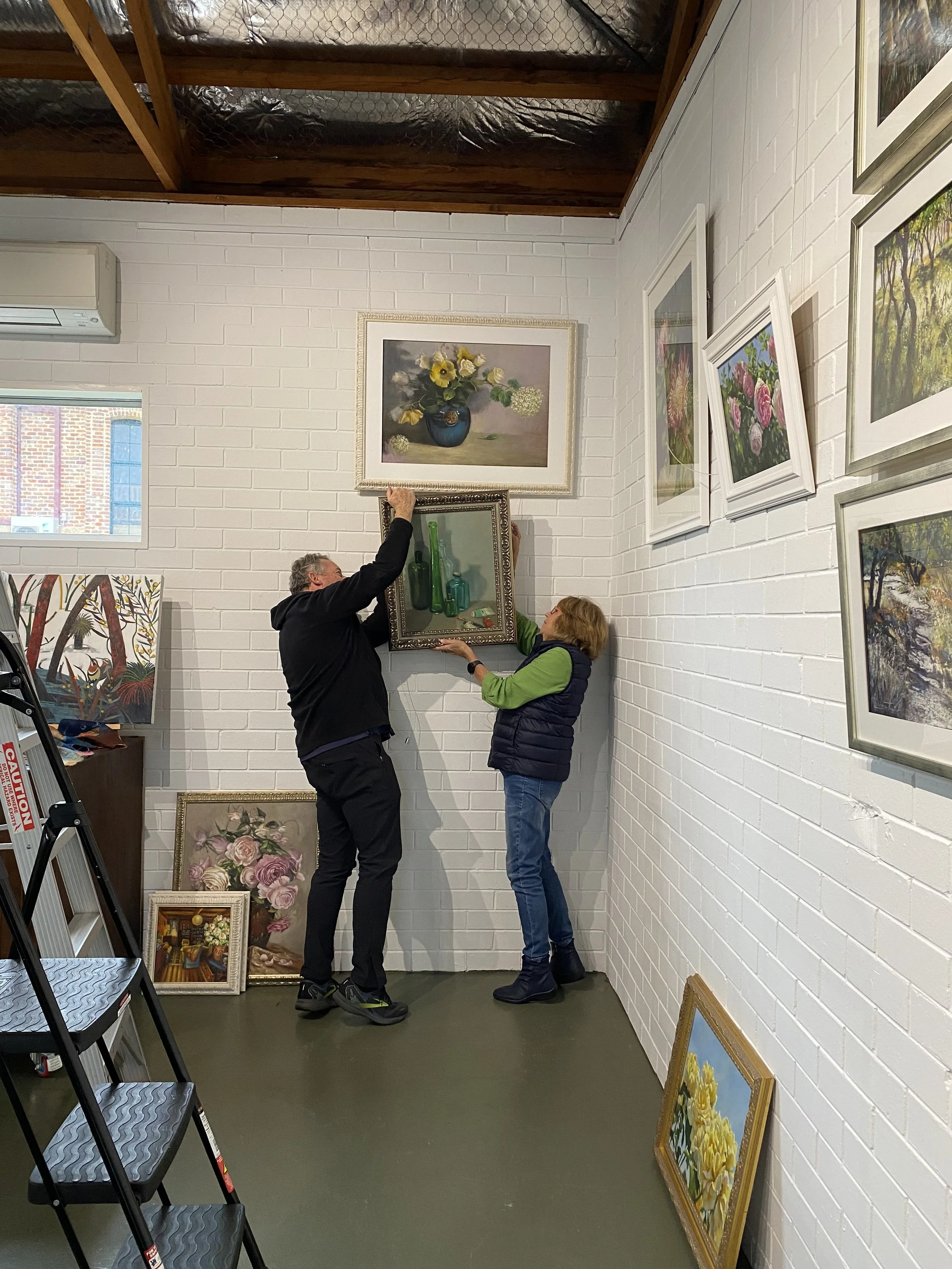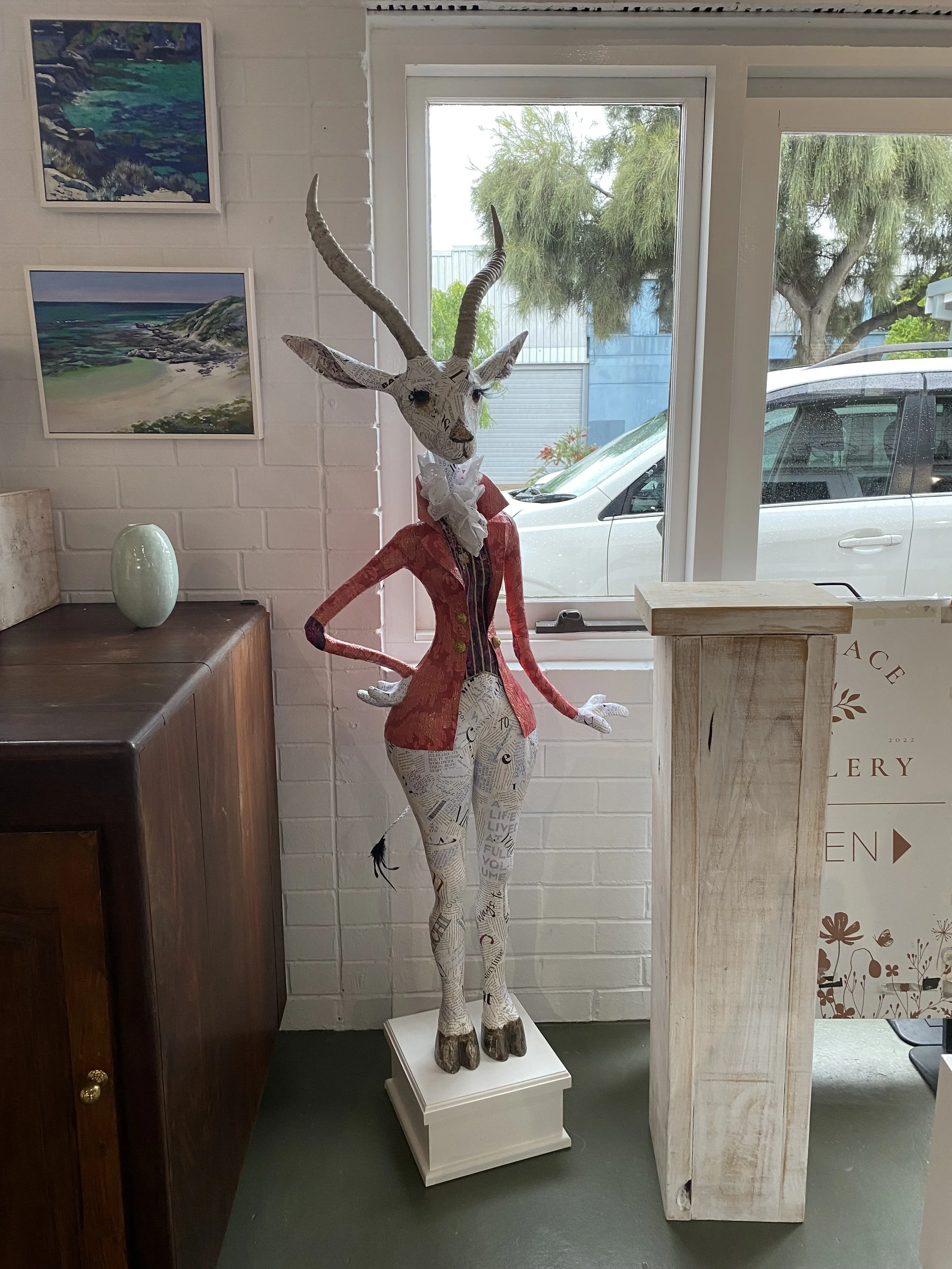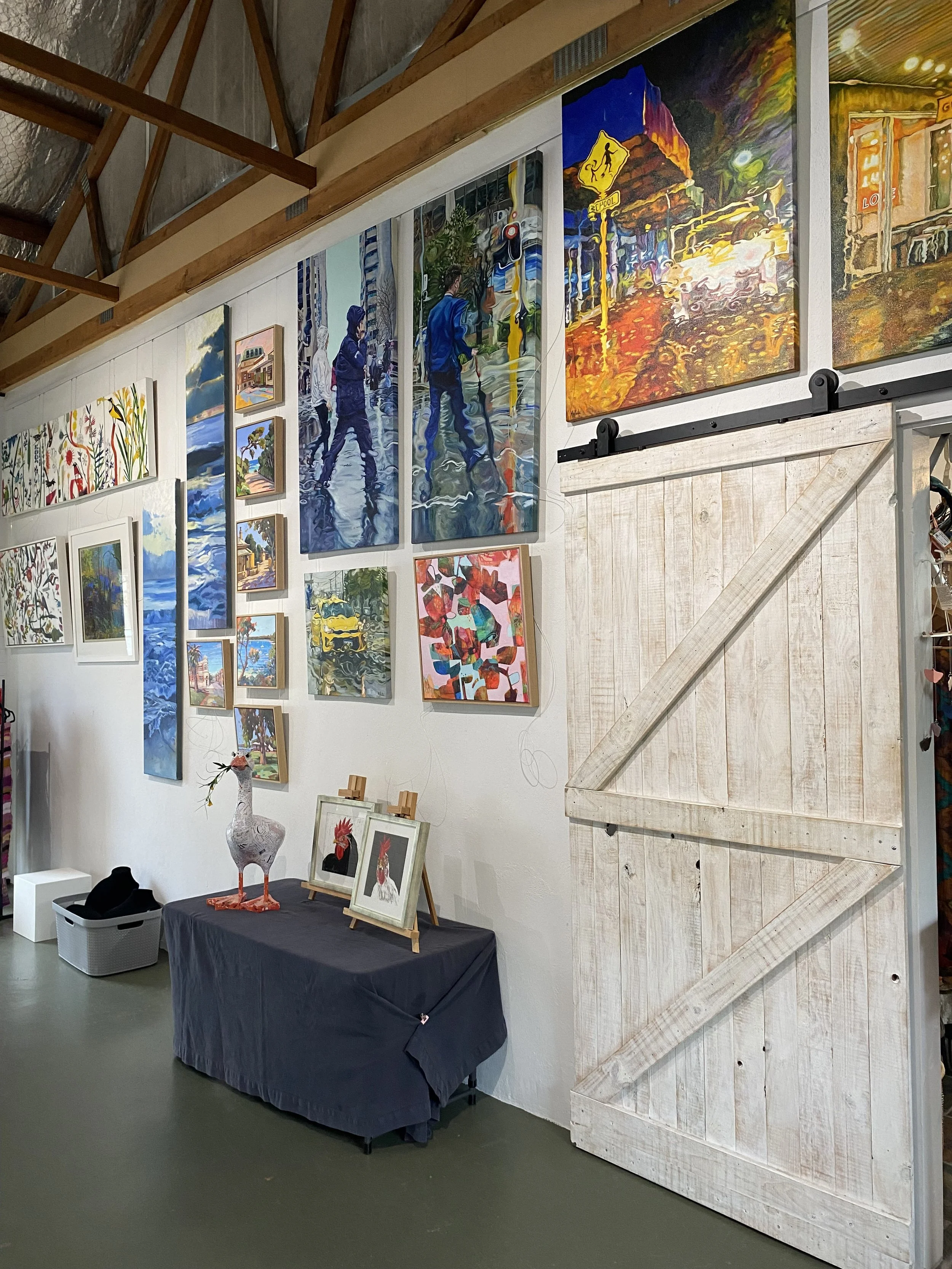Community Arts for Wellbeing
Reflections on the OCD WA Fundraising Exhibition
Community art initiatives hold a significant place in mental health advocacy. They offer opportunities for expression, visibility, and connection often without the formal structures of therapy. The OCD WA fundraising exhibition, Creating Connections, grew from this premise: that creativity can bridge the space between personal experience and public understanding.
What began as a small-scale fundraising idea evolved into a collective expression of shared purpose. Twelve professional artists, each contributing work from their existing practice, came together in support of OCD WA’s mission to increase awareness and community understanding of obsessive–compulsive disorder. The artworks themselves were not themed around OCD or lived experience, but the act of gathering artists, audiences, and advocates within a shared space created its own form of dialogue.
Artwork by Fi Wilkie, Julie Cubbage and Leanna Taylor
Participation as a Pathway to Understanding
In community arts, the process itself becomes a kind of social intervention. Preparing, exhibiting, and viewing artworks creates opportunities for conversation that might not occur in traditional awareness campaigns. Rather than centring diagnosis, the exhibition invited curiosity and empathy. Visitors could encounter OCD not as a label but as lived experience something that exists within communities, not apart from them.
Artists described the process of contributing as both personal and collaborative: a chance to give form to inner experiences while supporting a shared cause. Art functioned as a connector rather than a treatment, a reminder that creativity can be therapeutic without being therapy.
Sculpture by artist Lynette Bell; Paintings by artist Leanna Taylor; Ceramic vessel by artist Julie Excell
Building a Culture of Creative Engagement
Community exhibitions like Creating Connections highlight the role of the arts in public mental health promotion. They foster inclusion, reduce stigma, and help reshape narratives around mental illness through authentic creative participation. Importantly, they also engage people who may not identify as “clients” or “patients” but who nonetheless benefit from connection and shared purpose.
For OCD WA, this model of engagement offers a sustainable way to raise awareness while building relationships across the arts and mental health sectors. For participants and facilitators alike, it affirms that wellbeing can be nurtured through collective creative action, through making, showing, talking, and simply being part of something larger than oneself.
Artwork displayed by Mecah White, Lynette Bell, Lesley Marshall, Fi Wilkie, Leanna Taylor and Anne McCaughey
Reflection
Working in this space has reinforced my belief that community arts sit within a vital middle ground: between the clinical and the everyday, between personal recovery and social change. Projects like Creating Connections remind us that art’s value doesn’t depend on formal diagnosis or therapeutic intent. Its power lies in bringing people together in shared experience, mutual recognition, and the simple act of making meaning visible.
Creating Connections runs from OCT 21st to NOV 2nd 2025 at Terrace Greenhouse, South Terrace, South Fremantle. Open daily 10:00 - 4:00.



